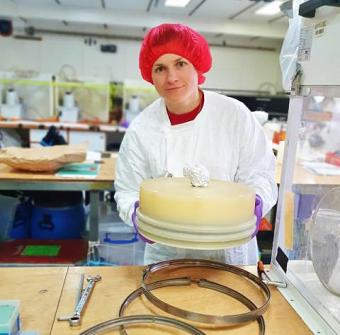The mass of ‘invisible’ microplastics found in the upper waters of the Atlantic Ocean is approximately 12–21 million tonnes, according to research published in the journal Nature Communications.
Significantly, this figure is only for three of the most common types of plastic litter in a limited size range. Yet, it is comparable in magnitude to estimates of all plastic waste that has entered the Atlantic Ocean over the past 65 years: 17 million tonnes. This suggests that the supply of plastic to the ocean have been substantially underestimated.
The lead author of the paper, Dr Katsiaryna Pabortsava from the National Oceanography Centre (NOC), said “Previously, we couldn’t balance the mass of floating plastic we observed with the mass we thought had entered the ocean since 1950. This is because earlier studies hadn’t been measuring the concentrations of ‘invisible’ microplastic particles beneath the ocean surface. Our research is the first to have done this across the entire Atlantic, from the UK to the Falklands.
Co-author, Professor Richard Lampitt, also from the NOC, added “if we assume that the concentration of microplastics we measured at around 200 metres deep is representative of that in the water mass to the seafloor below with an average depth of about 3000 metres, then the Atlantic Ocean might hold about 200 million tonnes of plastic litter in this limited polymer type and size category. This is much more than is thought to have been supplied.”
“In order to determine the dangers of plastic contamination to the environment and to humans we need good estimates of the amount and characteristics of this material, how it enters the ocean, how it degrades and then how toxic it is at these concentrations. This paper demonstrates that scientists have had a totally inadequate understanding of even the simplest of these factors, how much is there, and it would seem our estimates of how much is dumped into the ocean has been massively underestimated”.
Pabortsava and Lampitt collected their seawater samples during the 26th Atlantic Meridional Transect expedition in September to November 2016. They filtered large volumes of seawater at three selected depths in the top 200 metres and detected and identified plastic contaminants using state-of-the-art spectroscopic imaging technique. Their study focussed on polyethylene, polypropylene and polystyrene, which are commercially most prominent and also most littered plastic types.
This study builds on the NOC’s cutting-edge research into marine plastic contamination, which aims to better understand the magnitude and persistence of exposure to plastics and the potential harms it can cause. This work was supported by the EU H2020 AtlantOS programme and the NOC. The AMT programme was supported by the UK Natural Environment Research Council National Capability as funding to Plymouth Marine Laboratory and the NOC.

